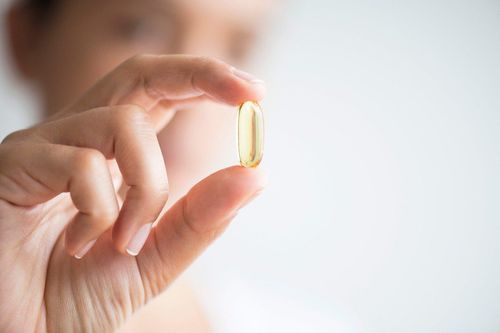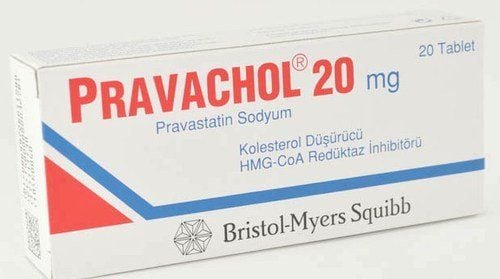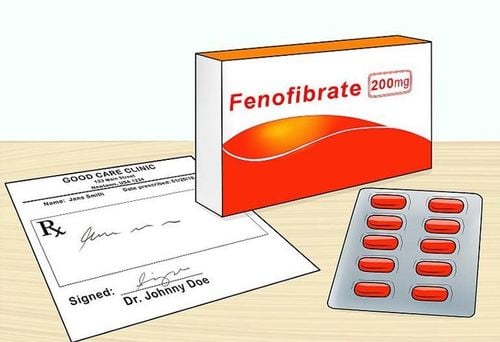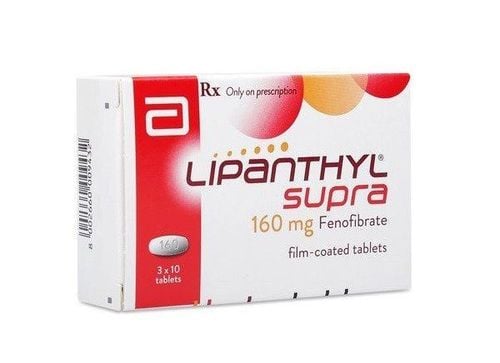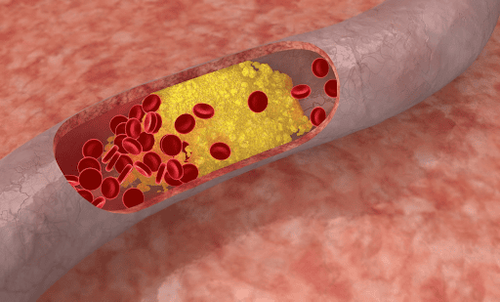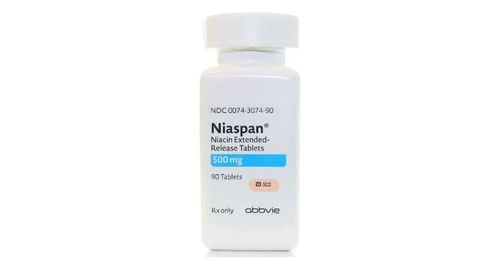This is an automatically translated article.
Fenoglide (Fenofibrate) is used with a proper diet to lower cholesterol and "bad" fats (such as LDL, triglycerides) and increase "good" cholesterol (HDL) in the blood. It works by increasing a natural substance (enzyme) that breaks down fats in the blood.1. How to use Fenoglide
Fenofibrate belongs to a class of drugs known as "fibrates". Reducing triglycerides in people with very high levels of triglycerides in the blood may reduce the risk of pancreatic disease (pancreatitis). However, fenofibrate may not reduce your risk of heart attack or stroke, so talk to your doctor about the risks and benefits of fenofibrate. In addition to adopting an appropriate diet (such as a low-cholesterol/low-fat diet), active lifestyle changes that may help this medication work better include exercise, Lose weight if overweight and stop smoking.Use Fenoglide as directed by your doctor, usually once daily. Fenofibrate comes in different capsule and tablet forms with varying amounts of medicine. Do not switch between different forms or brands of this medication unless directed by your doctor. Some forms of this medicine should be taken with food, but others can be taken with or without food. The most important thing is that you take this medication correctly for it to work its best.
Fenofibrate dosage is based on your medical condition and response to treatment.
If you are also taking certain other medicines to lower cholesterol (such as cholestyramine or colestipol), take fenofibrate at least 1 hour before or at least 4 to 6 hours after these medicines. These drugs may interact with fenofibrate, preventing your body from fully absorbing the medicine.
Take this medication regularly as directed by your doctor to get the most benefit from it. To help you remember your dosing schedule, take your medicine at the same time each day. Only increase your dose or use it more often or for longer when specifically directed by your doctor. Your cholesterol/triglyceride levels will not drop any faster and your risk of side effects will increase. Keep taking this medicine even if your condition has gotten better. Most people with high cholesterol/triglyceride levels do not feel sick themselves.
It is very important that you continue to follow your doctor's advice regarding diet and exercise. It may take up to 2 months before you get the effects this medicine gives.
2. Side effects
Fenofibrate, in small doses, can cause gallstones and liver problems. If you notice any of the following side effects, tell your doctor right away: Persistent nausea/vomiting, loss of appetite, stomach/abdominal pain, yellowing eyes/skin.This medicine rarely causes muscle problems (which can lead to a very serious condition called rhabdomyolysis). Tell your doctor right away if you develop any of the following symptoms: Muscle aches/pain/weakness (especially accompanied by fever or unusual tiredness), signs of kidney problems (such as a change in the amount of urine).
This medicine may cause serious side effects that lower your HDL ("good" cholesterol) levels. This is the opposite of what would happen with HDL levels (paradoxical response). Your HDL cholesterol level should be checked regularly.

Bạn có thể gặp tình trạng buồn nôn, chán ăn khi dùng thuốc Fenoglide
Call 911 right away if the following serious side effects occur, including: Chest pain, sudden pain/redness/swelling often in the legs, signs of infection (such as sore throat that won't go away) loss, fever, swollen lymph nodes), chills, cough).
Here are some possible side effects after taking fenofibrate:
Abnormal liver function tests Nasal congestion and runny nose Infection Thrombophlebitis, an inflamed vein caused by a blood clot Itching Pain Pain Muscle Rash on the skin Uncommon side effects
Change in sexual preferences Myopathy Eye irritation Sore throats Common cold Increased pallor of the skin Back pain Dizziness Flu-like symptoms Pain Headache Nausea Ợ slightly Severe abdominal pain Decreased blood platelets Indigestion Joint pain Muscle spasms Difficulty sleeping Cough Diarrhea Low HDL cholesterol Fenofibrate drug rarely causes a serious allergic reaction to the medicine. However, call 911 right away if you have a rash, itching/swelling (tongue/face/neck), severe dizziness, trouble breathing.
If you experience any unusual symptoms after taking Fenofibrate, tell your doctor immediately.
3. Precautionary measures
Before taking fenofibrate, tell your doctor if you are allergic to it; or with other "fibrates" (such as fenofibric acid); or if you have any other allergies. This product may contain inactive ingredients (such as soy), which may cause allergic reactions or other problems.Before using this medication, tell your doctor or pharmacist your medical history, especially if you have kidney problems, gallbladder disease, liver disease (such as cholangitis, hepatitis), use alcohol use.
During pregnancy, use Fenofibrate only when absolutely necessary and under the direction of a doctor.
Due to the possible risk to the infant, breastfeeding is not recommended while using this medicine and for 5 days after stopping it.

Phụ nữ mang thai nên cân nhắc cẩn thận trước khi dùng thuốc Fenoglide
4. Interaction
Fenofibrate's interactions with other medications may change how the drug works or increase the risk of serious side effects.Some products may interact with Fenofibrate, including: "blood thinners" (such as warfarin).
Fenofibrate is very similar to fenofibric acid. Do not use medicines containing fenofibric acid while you are taking fenofibrate.
If you experience fainting or difficulty breathing after you take an overdose of Fenofibrate, contact your doctor immediately.
Medical tests (such as cholesterol/triglyceride levels, kidney/liver function tests, complete blood count) should be performed periodically to monitor your progress or check for side effects .
Fenofibrate should be stored at room temperature, away from light and moisture. Different brands of this medicine have different ways of storing them. Check the information on the product packaging for instructions on how to store the medicine.
Please dial HOTLINE for more information or register for an appointment HERE. Download MyVinmec app to make appointments faster and to manage your bookings easily.
Reference source: webmd.com



